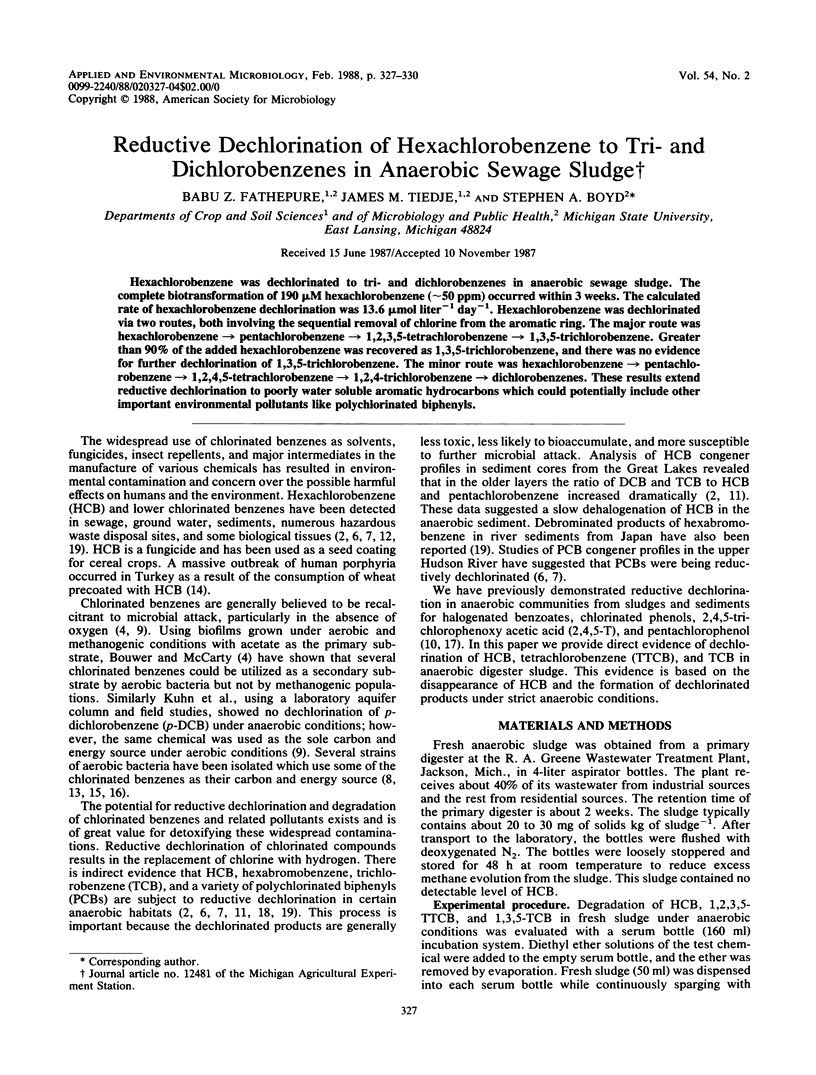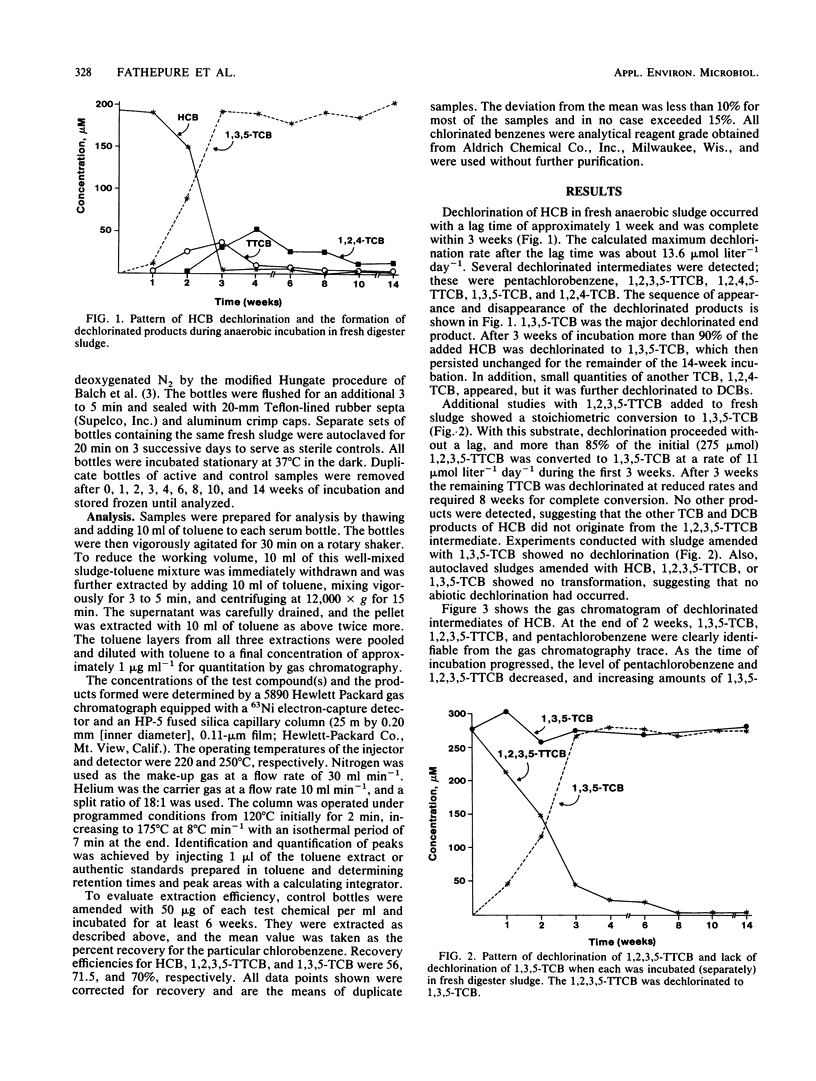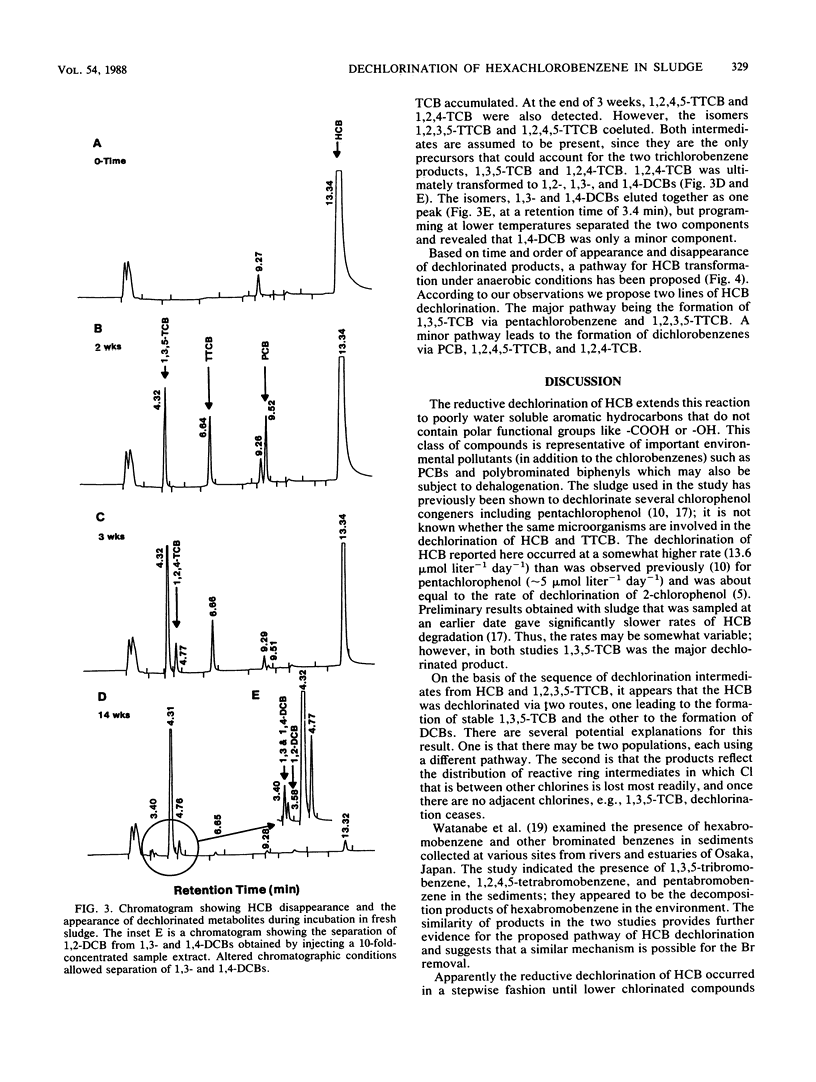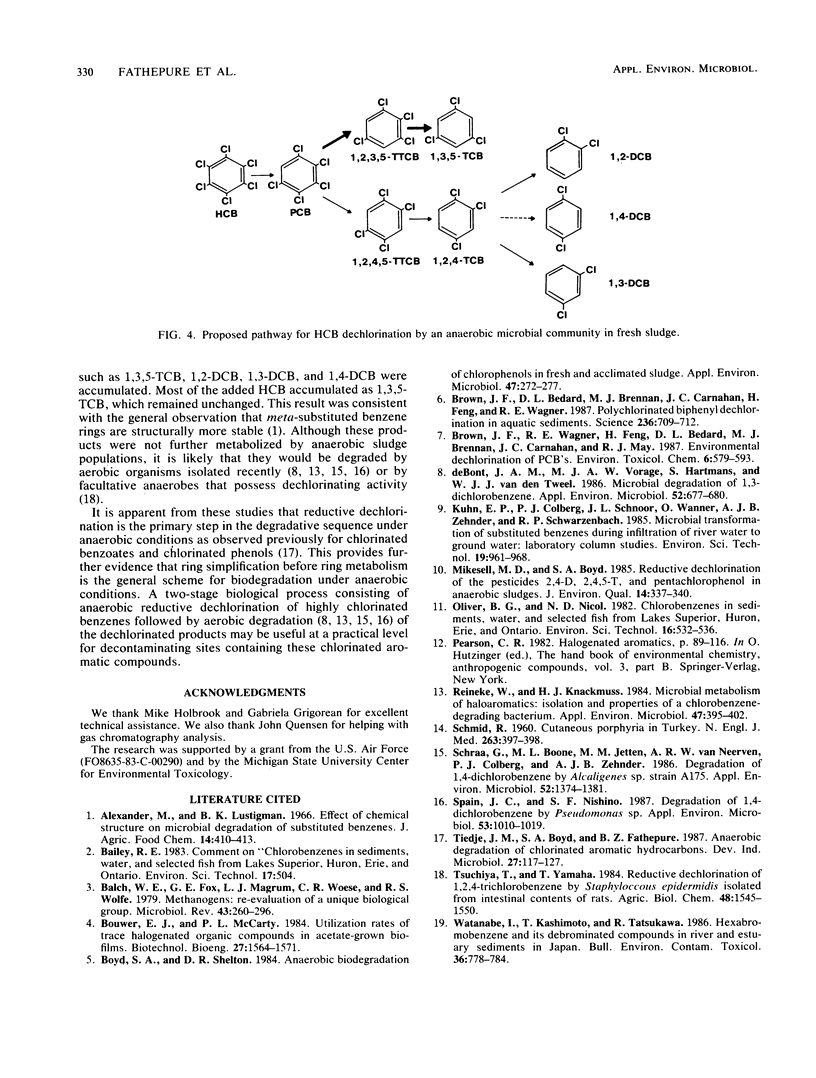Abstract
Hexachlorobenzene was dechlorinated to tri- and dichlorobenzenes in anaerobic sewage sludge. The complete biotransformation of 190 microM hexachlorobenzene (approximately 50 ppm) occurred within 3 weeks. The calculated rate of hexachlorobenzene dechlorination was 13.6 mumol liter-1 day-1. Hexachlorobenzene was dechlorinated via two routes, both involving the sequential removal of chlorine from the aromatic ring. The major route was hexachlorobenzene----pentachlorobenzene----1,2,3,5-tetrachlorobenzene--- -1,3,5- trichlorobenzene. Greater than 90% of the added hexachlorobenzene was recovered as 1,3,5-trichlorobenzene, and there was no evidence for further dechlorination of 1,3,5-trichlorobenzene. The minor route was hexachlorobenzene----pentachlorobenzene----1,2,4,5-tetrachlorobenzene--- -1,2,4- trichlorobenzene----dichlorobenzenes. These results extend reductive dechlorination to poorly water soluble aromatic hydrocarbons which could potentially include other important environmental pollutants like polychlorinated biphenyls.
Full text
PDF



Selected References
These references are in PubMed. This may not be the complete list of references from this article.
- Balch W. E., Fox G. E., Magrum L. J., Woese C. R., Wolfe R. S. Methanogens: reevaluation of a unique biological group. Microbiol Rev. 1979 Jun;43(2):260–296. doi: 10.1128/mr.43.2.260-296.1979. [DOI] [PMC free article] [PubMed] [Google Scholar]
- Boyd S. A., Shelton D. R. Anaerobic biodegradation of chlorophenols in fresh and acclimated sludge. Appl Environ Microbiol. 1984 Feb;47(2):272–277. doi: 10.1128/aem.47.2.272-277.1984. [DOI] [PMC free article] [PubMed] [Google Scholar]
- Brown J. F., Jr, Bedard D. L., Brennan M. J., Carnahan J. C., Feng H., Wagner R. E. Polychlorinated biphenyl dechlorination in aquatic sediments. Science. 1987 May 8;236(4802):709–712. doi: 10.1126/science.236.4802.709. [DOI] [PubMed] [Google Scholar]
- Reineke W., Knackmuss H. J. Microbial metabolism of haloaromatics: isolation and properties of a chlorobenzene-degrading bacterium. Appl Environ Microbiol. 1984 Feb;47(2):395–402. doi: 10.1128/aem.47.2.395-402.1984. [DOI] [PMC free article] [PubMed] [Google Scholar]
- SCHMID R. Cutaneous porphyria in Turkey. N Engl J Med. 1960 Aug 25;263:397–398. doi: 10.1056/NEJM196008252630807. [DOI] [PubMed] [Google Scholar]
- Schraa G., Boone M. L., Jetten M. S., van Neerven A. R., Colberg P. J., Zehnder A. J. Degradation of 1,4-dichlorobenzene by Alcaligenes sp. strain A175. Appl Environ Microbiol. 1986 Dec;52(6):1374–1381. doi: 10.1128/aem.52.6.1374-1381.1986. [DOI] [PMC free article] [PubMed] [Google Scholar]
- Spain J. C., Nishino S. F. Degradation of 1,4-dichlorobenzene by a Pseudomonas sp. Appl Environ Microbiol. 1987 May;53(5):1010–1019. doi: 10.1128/aem.53.5.1010-1019.1987. [DOI] [PMC free article] [PubMed] [Google Scholar]
- Watanabe I., Kashimoto T., Tatsukawa R. Hexabromobenzene and its debrominated compounds in river and estuary sediments in Japan. Bull Environ Contam Toxicol. 1986 May;36(5):778–784. doi: 10.1007/BF01623583. [DOI] [PubMed] [Google Scholar]
- de Bont J. A., Vorage M. J., Hartmans S., van den Tweel W. J. Microbial degradation of 1,3-dichlorobenzene. Appl Environ Microbiol. 1986 Oct;52(4):677–680. doi: 10.1128/aem.52.4.677-680.1986. [DOI] [PMC free article] [PubMed] [Google Scholar]


